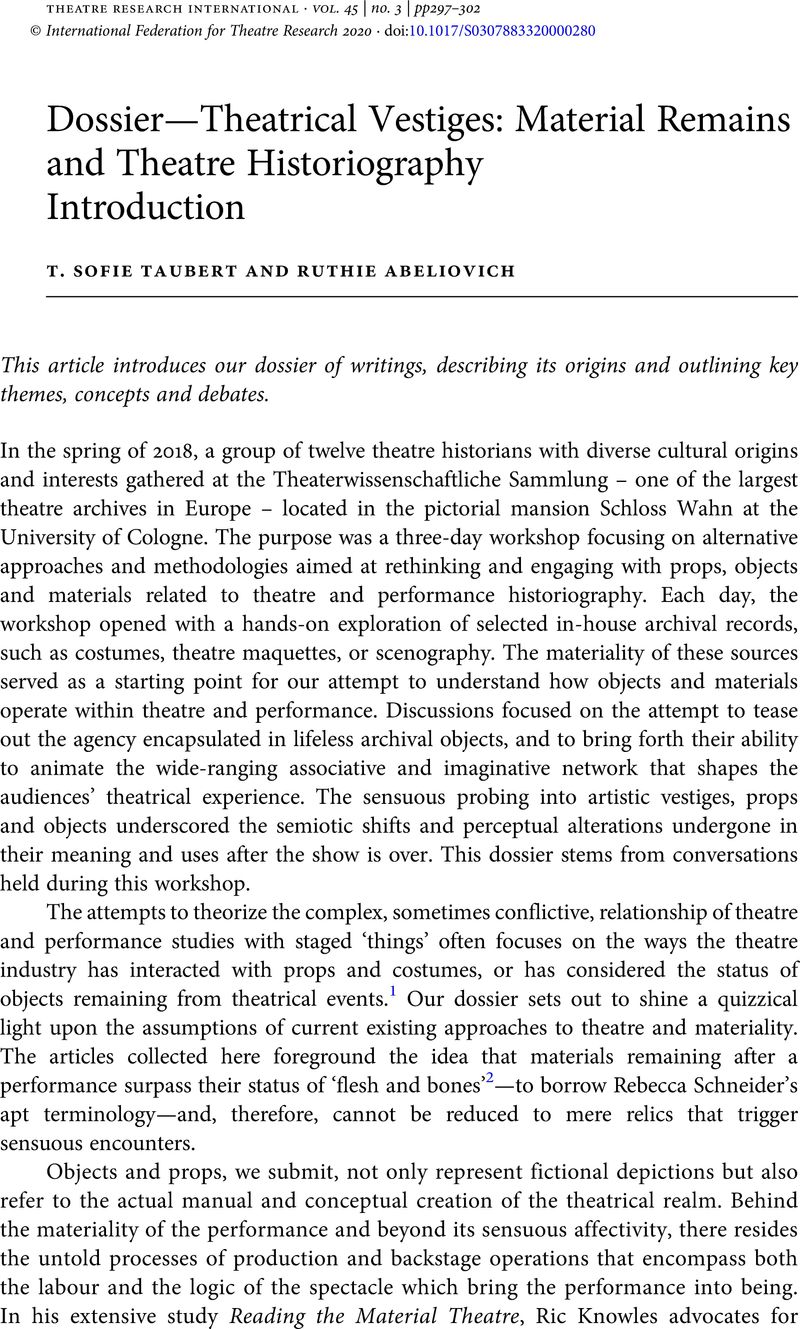No CrossRef data available.
Published online by Cambridge University Press: 04 November 2020

1 See Theatre Journal's special issue on Theatre and Material Culture, 64, 3 (2012).
2 Schneider, Rebecca, Performing Remains: Art and War in Times of Theatrical Reenactment (London: Routledge, 2011)CrossRefGoogle Scholar.
3 Knowles, Ric, Reading the Material Theatre (Cambridge: Cambridge University Press, 2008), p. 11Google Scholar.
4 Connor, Steven, Paraphernalia: The Curious Lives of Magical Things (London: Profile Books Ltd, 1996), p. 3Google Scholar. Connor's understanding of affordance is shaped by J. J. Gibson, who coined the term to discuss the formation of perception regarding objects and their relation to the environment. See Gibson, J. J., The Ecological Approach to Visual Perception (Hillsdale, NJ: Lawrence Erlbaum, 1986), pp. 127–46Google Scholar.
5 Bennett, Jane, Vibrant Matter: A Political Ecology of Things (Durham, NC: Duke University Press, 2010), p. viiiCrossRefGoogle Scholar.
6 Posner, Dassia N., Orenstein, Claudia and Bell, John, eds. The Routledge Companion to Puppetry and Material Performance (London: Routledge, 2014), p. 5CrossRefGoogle Scholar.
7 Ibid.
8 Johnson, Odai, ‘Afterword – Scarred Texts: Etudes of Absence’ in Johnson, Stephen (ed.), A Tyranny of Documents: The Performing Arts Historian as Film Noir Detective (New York: Theatre Library Association, 2011), pp. 336–44Google Scholar, here p. 340.